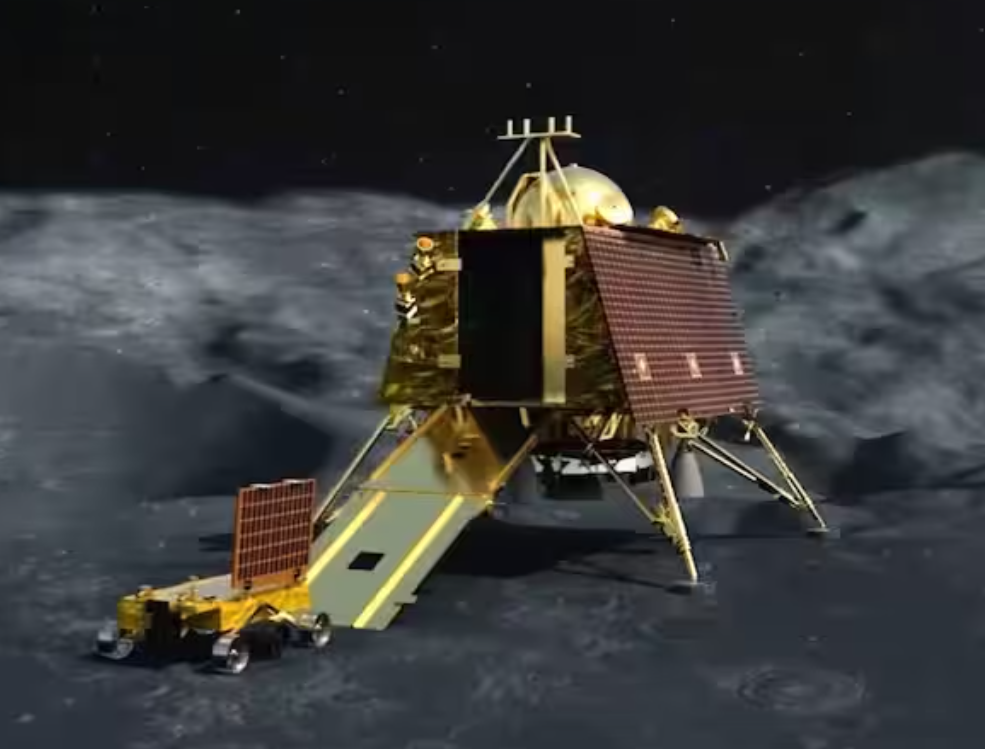Chandrayaan-3, the Indian Space Research Organization’s third lunar mission, was launched on July 14, 2023, from the Satish Dhawan Space Center in Sriharikota.
Chandrayaan-3 comprised Vikram, a lander, and Pragyan, a rover. Vikram touched down near the moon’s south pole on 23 August 2023, which made India the fourth country in the world to achieve a successful soft landing on the Moon. India is also the first country to land successfully near the moon’s south pole region which was unexplored until today.
The Vikram and Pragyan were designed to conduct scientific experiments on the moon’s surface. The Vikram carried a number of instruments, including a magnetometer, a camera, and a spectrometer. The rover carried a laser altimeter, a spectrometer, and a camera.

The mission was a major success for India. It manifested India’s ability to swiftly and successfully land a spacecraft on the Moon’s surface and carry out scientific experiments on it. The mission would prove to be very crucial in our understanding of the Moon.
What makes this achievement of India peculiar is the relatively small amount of resources used by India to complete this mission. Experts believe that this is a role model for other countries in their future endeavours.
Here are a few of Chandrayaan-3’s scientific goals:
• To investigate the lunar south pole, an area that has not yet received much attention.
• To look for water, and ice on the moon.
• To investigate the lunar surface’s makeup.
• To investigate the lunar atmosphere.
• To create technology for upcoming lunar expeditions.
In India’s space program, the Chandrayaan-3 mission marked a significant turning point. It showed India’s expanding capacity for space exploration and its dedication to scientific research. Additionally, the mission enhanced India’s reputation abroad.
The Chandrayaan-3’s success has paved the way for future missions to the Moon by ISRO. By 2030, the agency hopes to send a human to the moon on a mission.